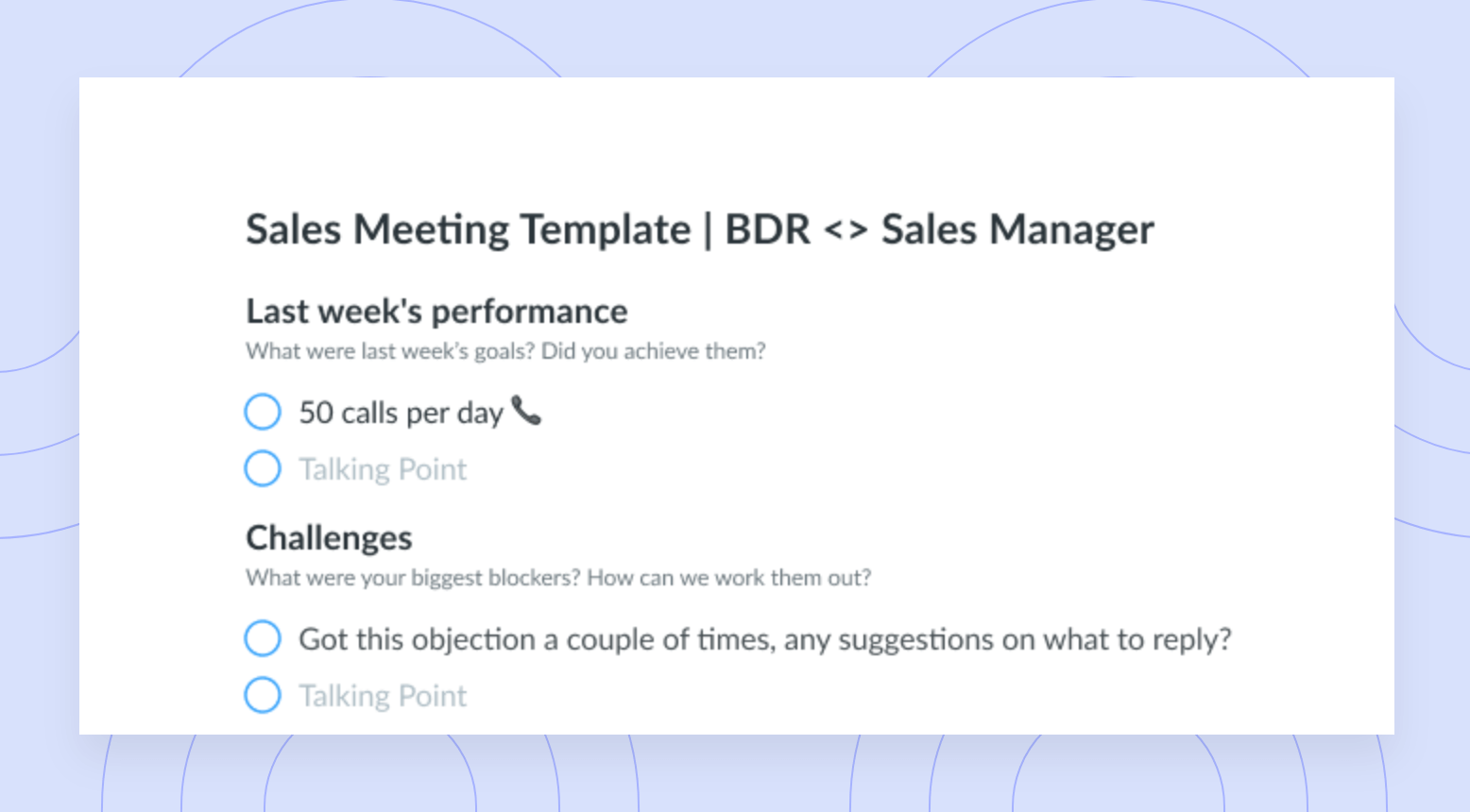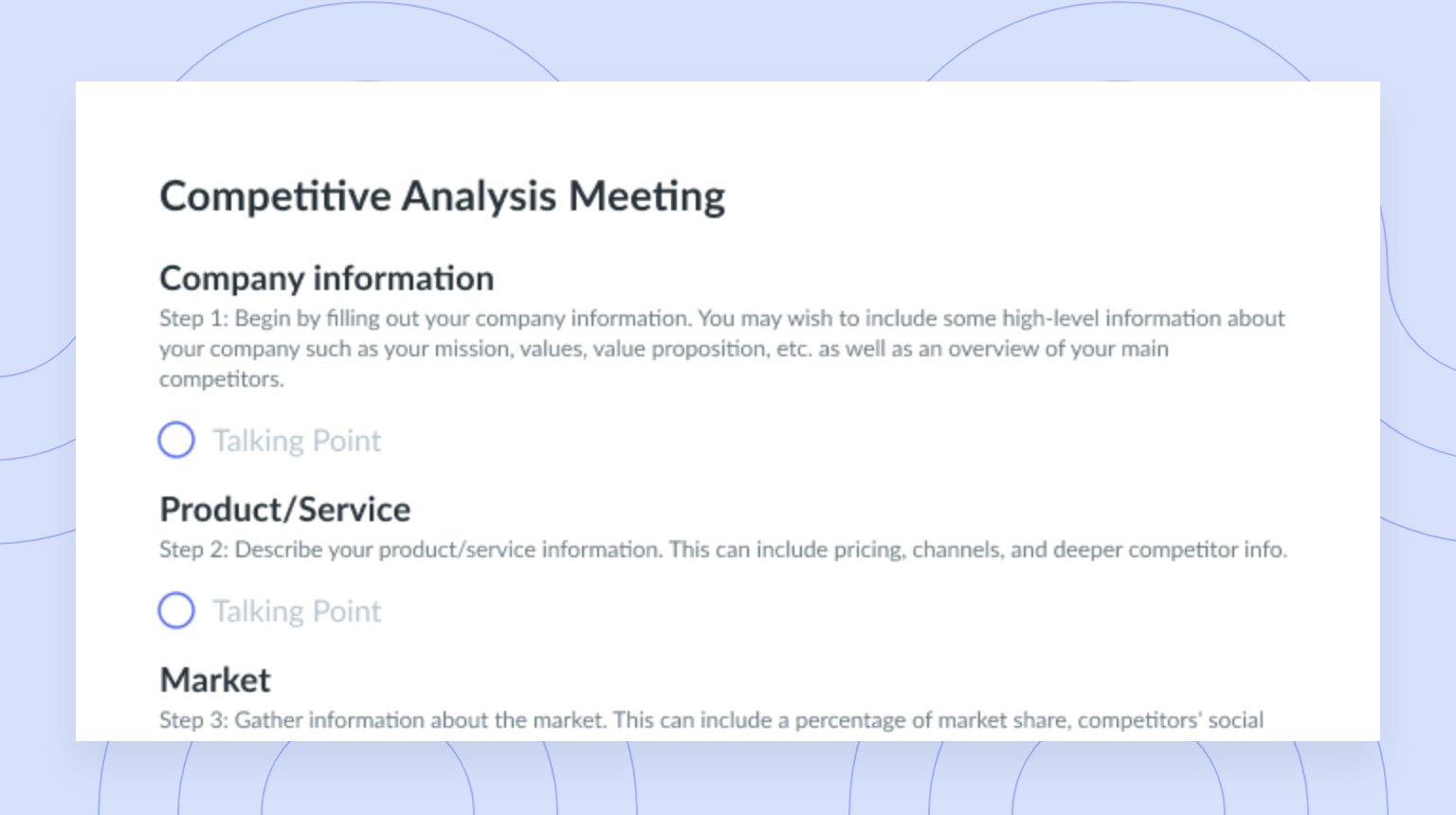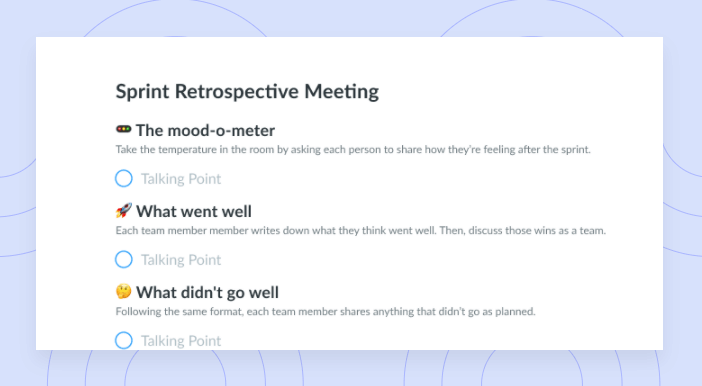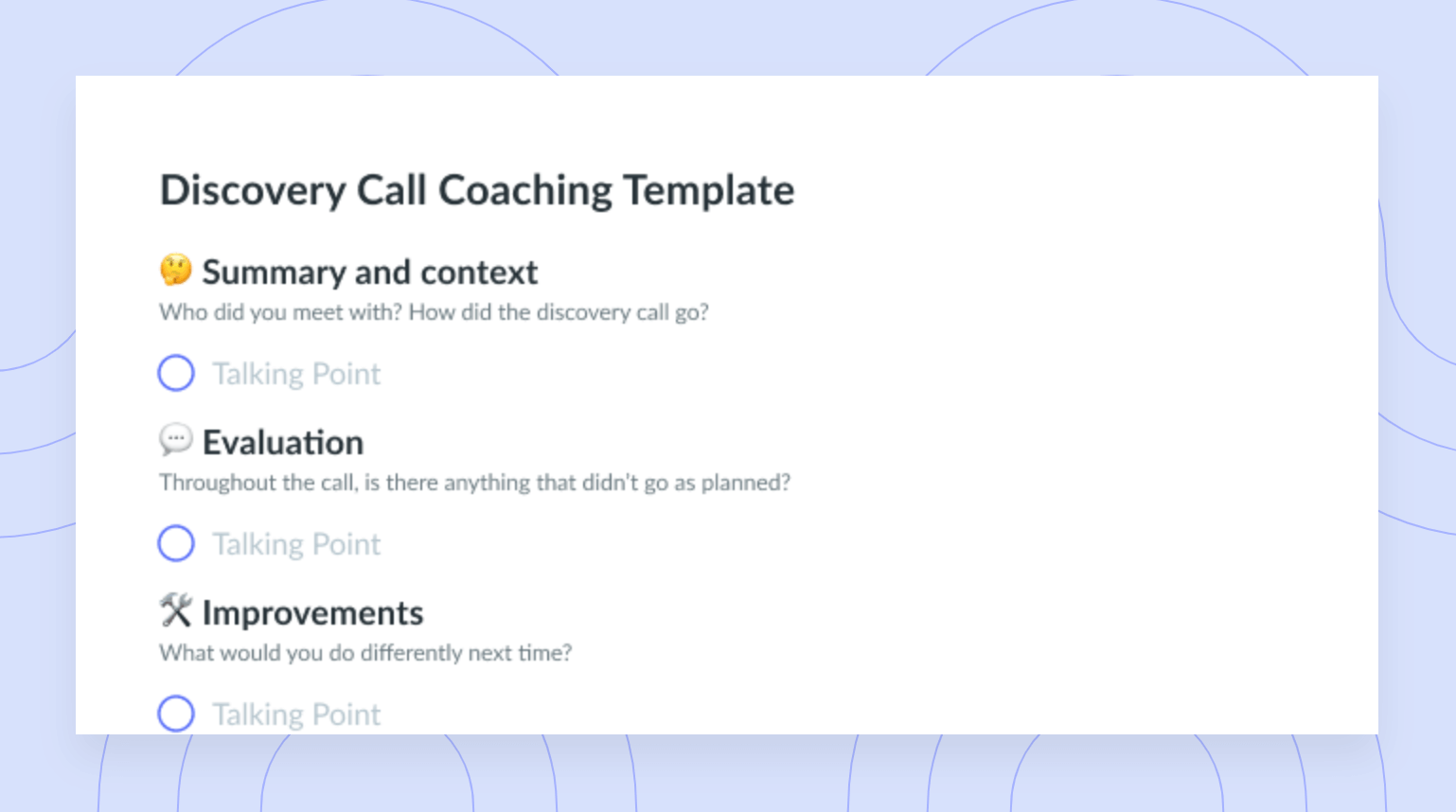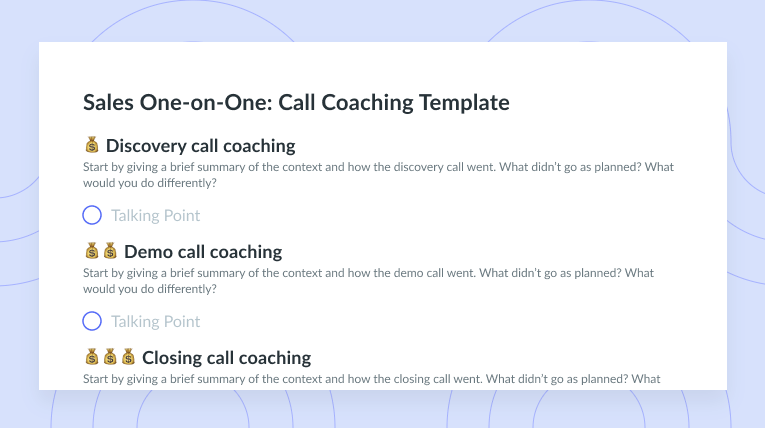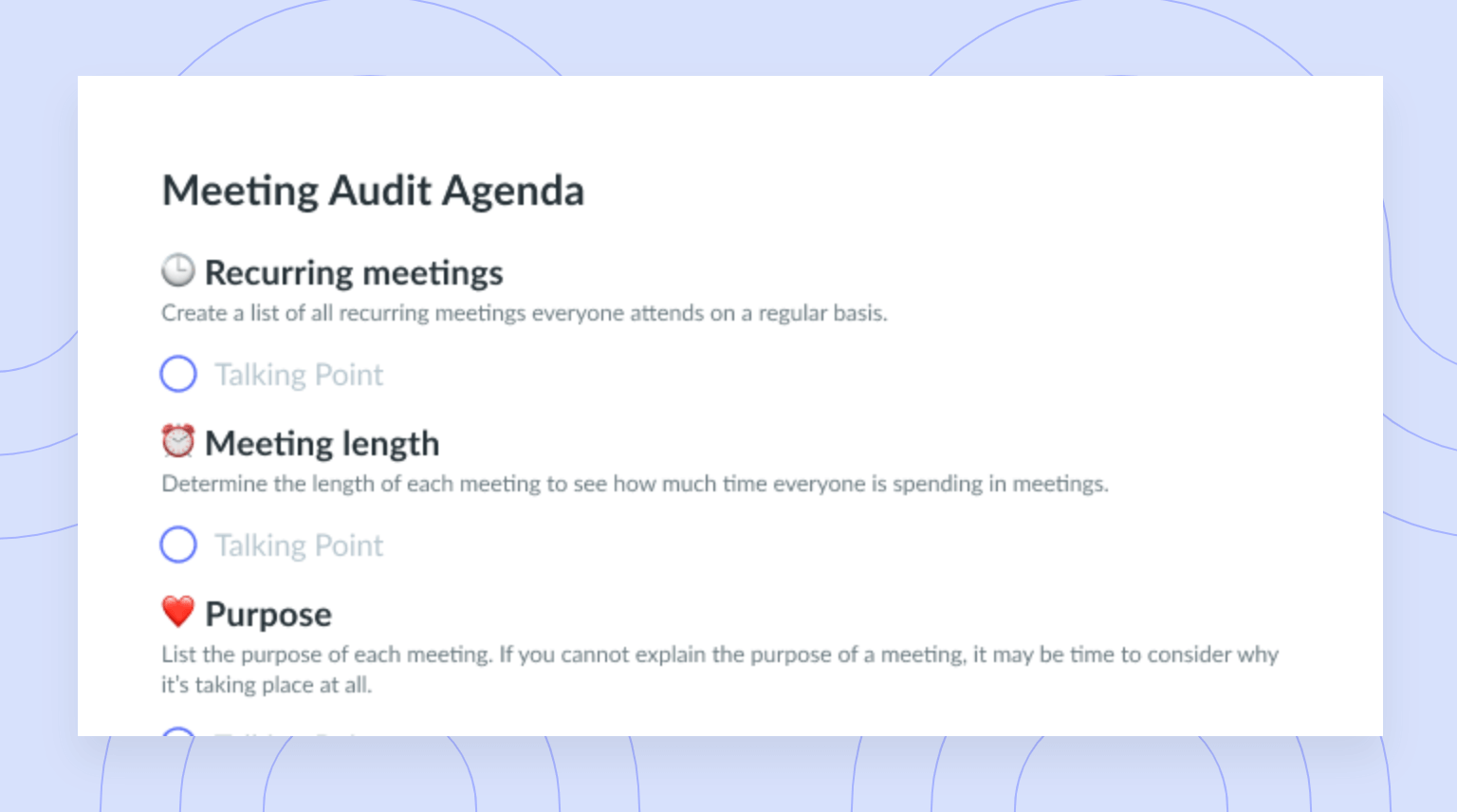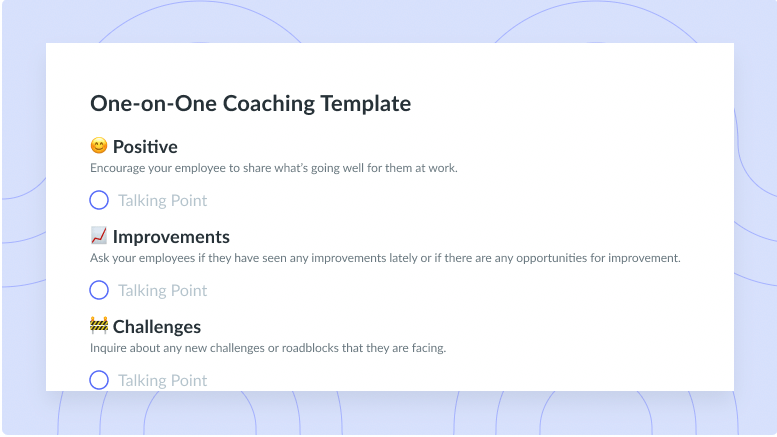8 Agile Coaching Best Practices
Learn about the unique agile coach role and how you can implement agility coaching into your management style.
Agility isn’t reserved for athletes. Having stellar reflexes in the workplace is an underappreciated skill that can take any team from mediocre to high performing. Some organizations have an agile coach role within the company who works as a mentor for other employees; others implement agile coaching methodologies to achieve greatness.
The good news is that anyone can be an agile coach! If you’re passionate about creating and improving processes within your company, you’re already on your way.
Let’s take a look at the levels of agile coaching, the difference between an agile coach and a scrum master, and eight agile coaching best practices for you to implement into your own management style.
- What is agile coaching?
- The levels of agile coaching
- Agile coach vs. scrum master
- 8 agile coaching best practices
What is agile coaching?
Being agile means moving quickly and easily. An agile coach is responsible for implementing tools and techniques to help organizations, teams, and individuals adopt agile methods, values, and mindsets. The goal is to foster more effective and productive teams to produce better business outcomes and deliver better products or services for customers.
An agile coach typically works with one part of an organization at a time to improve performance. They also facilitate team or company change by working with management to implement systems that allow for agile transformation.

Run effective agile meeting
Increase meeting engagement and productivity with a collaborative agenda that the whole team can contribute to. Try using a tool like Fellow!

The levels of agile coaching
1Team coach
Team coaching takes place at the (you guessed it!) team level. Team coaches or agile team facilitators work at the micro level with individual teams, groups of employees, and their managers. They specifically work to increase the effectiveness and cohesiveness of the group. They also facilitate activities that aid teams in empowerment, creativity, and self-discovery—this is done by helping the team align around a common purpose, establish a mission, and create a healthy team environment.
2Agile coach
An agile coach works with multiple teams to identify and remove obstacles that hinder agility. They are proficient mentors, teachers, facilitators, and business coaches who engage with internal and external forces that aid the team in implementing agility. They integrate newly agile teams within wider company systems to ease the transition. Agile coaches encourage team best practices and are often responsible for measuring the results of the new change.
3Enterprise agile coach
An enterprise agile coach is there to help the company develop the credibility, knowledge, and coaching skills needed to implement agile systems at the company level. While these individuals are less involved in day-to-day tasks of teams, they help change the overall structure of an organization by helping the whole business engage in agile principles. When you think of enterprise agile coaching, think leadership, culture, and organizational structure.
Agile coach vs. scrum master
Scrum masters and agility coaches are similar in that both roles mentor teams in adopting self-management and cross-functionality processes. The difference is that scrum masters typically focus on small teams, while agile coaches work beyond individual groups. Agile coaching typically happens at the departmental or company-wide level; a scrum master may lead a team using agile project management through the course of a project, but it will be an agile coach who transforms the entire organization by improving overall agility.
8 agile coaching best practices
- Host agile meetings
- Set clear goals for your agile transition
- Foster alignment on agile goals
- Create agile teams
- Understand agile frameworks
- Inspire positive relationships
- Build an agile culture
- Encourage an agile mindset
1Host agile meetings
Agile meetings aim to improve team efficacy. Forget about time-wasting, unstructured, and inefficient sit downs. Using agile meetings, you and your team can meet in shorter time frames and adjust your workflow to become more effective. Use agile frameworks like scrums and kanbans to set intervals of work, evaluate output and processes, and improve your work. Agile meetings should be highly focused and are meant to be as efficient as possible, so each meeting should have a clear and realistic goal. The best part is that you can be flexible! Find out what works best for your team by testing a variety of agile meeting formats.
Try out these free templates during your next agile meeting:
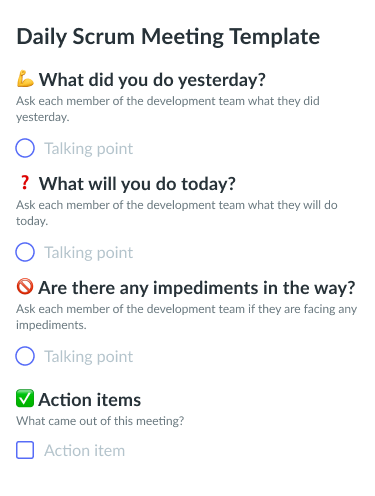

2Set clear goals for your agile transition
Employees need to understand the benefits of an agile transition if they’re going to implement new practices in the workplace. Help them understand by setting some goals with your team as you begin. The shift to agile systems should be treated like any other project aiming to introduce change; the first objective needs to be engaging with leadership so new processes have buy-in from all senior employees. Next, outline short-term goals that will drive you as you develop new structures and formalize your roadmap to success. You don’t need to plan all tasks in detail at this stage, but you’ll need an outline that shows how you’ll get there!
3Foster alignment on agile goals
To help an organization iterate on their work, you’ll need to work closely with company decision-makers. Foster alignment on agile goals by reviewing the organizational structure and restructuring teams, departments, or entire companies as needed. For example, as a coach you may aid in redefining roles and responsibilities for individuals, or redesign the org chart to make teams cross-functional. There is bound to be pushback at some point during an agile transformation, so make sure you provide consistent encouragement and reassurance, and clearly explain how adopting new processes will translate to incredible results.
4Create agile teams
An agile coach helps new teams get up and running so they can implement agile practices. This coach also supports existing teams to implement agile techniques and culture. When you first meet with a new team, ask questions like: how effective are your team meetings? How do you foster open communication as a team? What existing systems and processes do you believe are holding the team back from achieving long-term goals? Once you have answers to these diagnostic questions, work directly with members of the team to take their goals from dream to reality.
5Understand agile frameworks
There are a variety of agile frameworks an agile coach can use to help teams and organizations thrive. Some popular framework examples include: scrum, kanban, scrumban, and extreme programming (XP). Scrum is the most popular framework and is used by over half of agile teams to add structure to the work process. Kanban uses a central board with columns that allow individuals to visualize the entire team’s workflow. As a coach, you should study multiple frameworks and choose what’s right for each organization and team.
6Inspire positive relationships
You have to build your people before you build your business! Agile coaches are relationship builders as much as they’re mentors and organizers. Having a connected team will make it easier to implement seamless new systems and processes within a company. It’s simple: a healthy team will be more willing to work through challenges, collaborate on new projects, and encourage each other throughout the transformation of an agile culture. Inspire positive relationships by building connections with employees at all levels of an organization and by using evidence to convince stakeholders that an agile transformation can and will work.
7Build an agile culture
An agile culture happens when your organization is committed to continued growth and improvement after the systems and processes have been implemented! Processes should be reviewed regularly so teams don’t go stale. Aim to reinvent and change systems on an annual or bi-annual basis, or as needed. An agile coach helps foster a culture of continuous improvement. Once an agile culture is developed, the organization should be able to move transformation along without the help of a coach. In short, a fully developed agile culture shouldn’t require an agile coach at all!
8Encourage an agile mindset
We need to be open to new ideas and new ways of thinking to grow. Adopting an agile mindset is a key factor during an organization’s agile transformation. First, employees should change their beliefs about their roles and colleagues by adopting a growth mindset. Once employees are keen to learn, managers need to let go of some control and trust the judgment of their reports. An agile culture encourages democratized decision-making and self-management structures.
Parting advice
If you’re constantly pursuing improvement, agile coaching may be for you! While perfection isn’t attainable, it’s not impossible to catch excellence. Agile teams are ready to work towards a common goal and aren’t scared of changing to achieve it. Whether you’re a scrum master, a manager looking to build an agile culture, or an agile coach yourself, implement these eight best practices into your day-to-day work and watch your team scale up at a faster rate than ever before. Above all else, remember that agile is an attitude. Challenge yourself by asking “how would I act in an agile way here?” the next time you’re presented with a new business challenge, and encourage your teammates to do the same.
![11 Best Free & Paid Agile Software in 2024 [+ Template]](https://fellow.app/wp-content/uploads/2023/06/agile-tools.jpg)



![After Action Reviews: 7 Best Practices [+ Free Template]](https://fellow.app/wp-content/uploads/2023/02/After-Action-Reviews.jpg)


![On-Call Engineering Best Practices [+ Pros & Cons]](https://fellow.app/wp-content/uploads/2022/09/On-Call-Engineering-Best-Practice.jpg)

